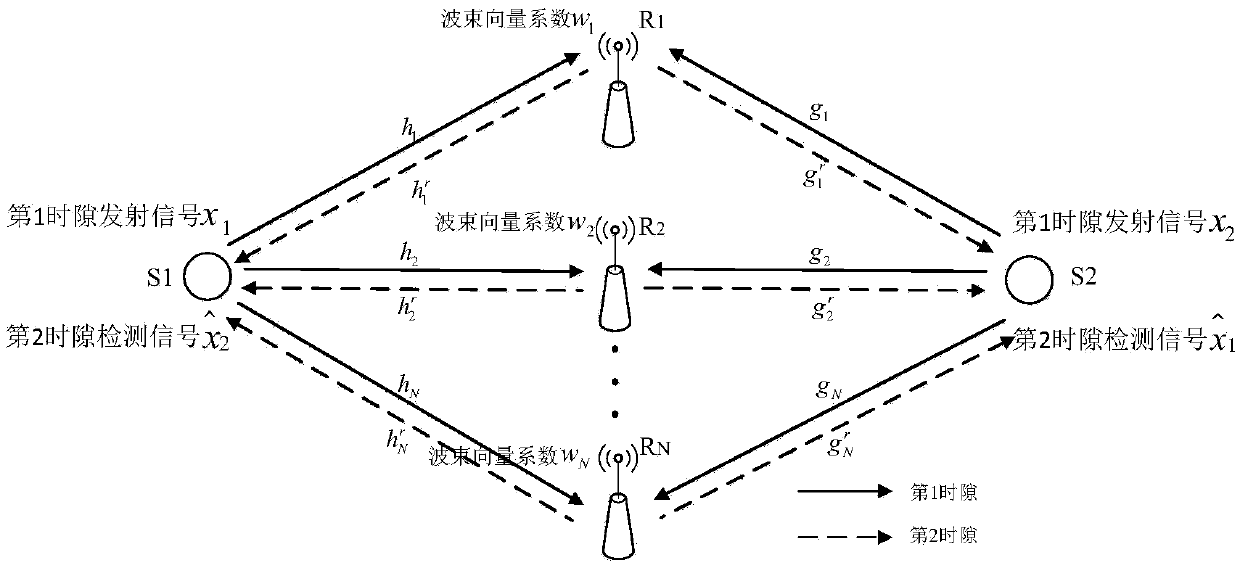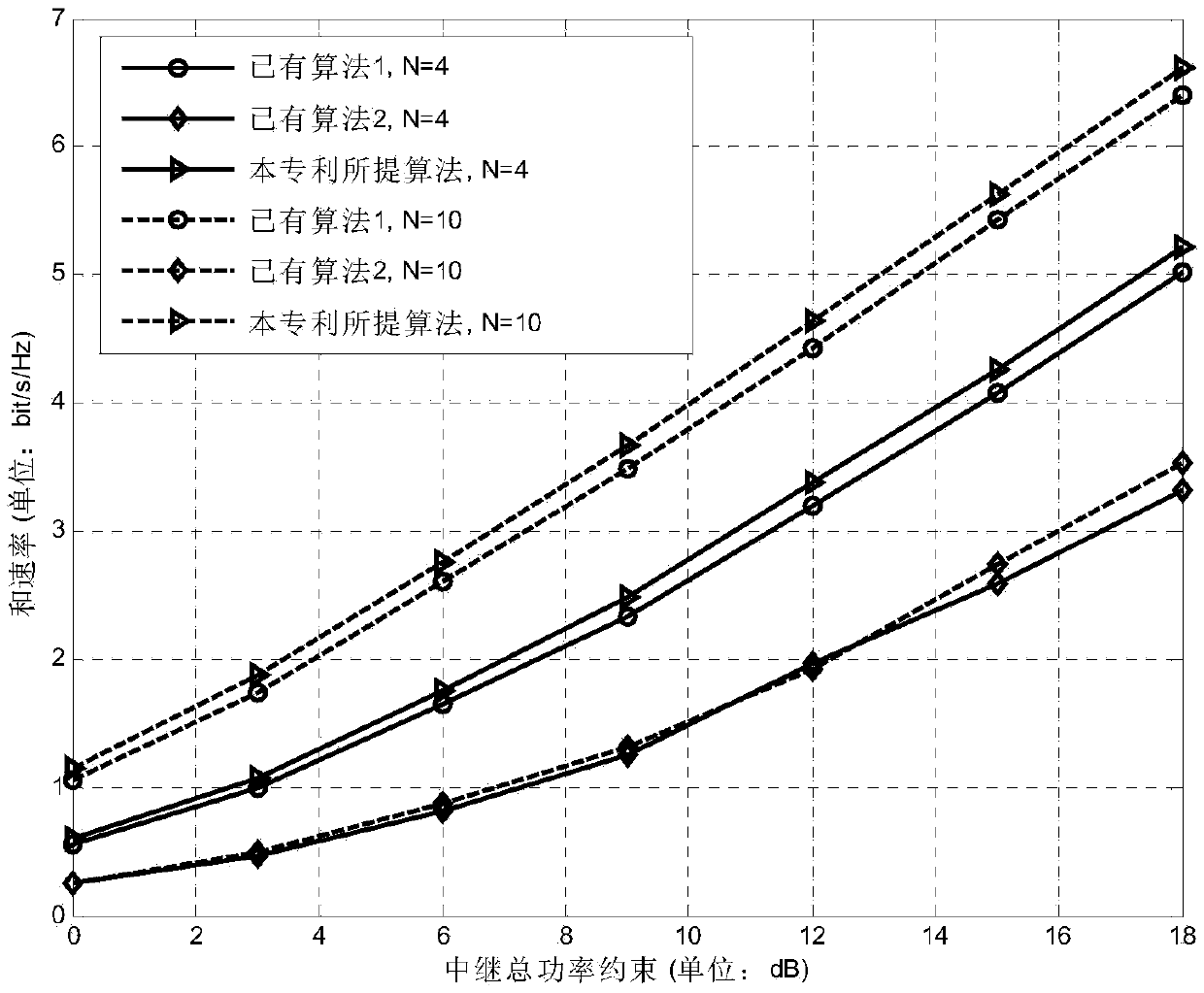Robust wave beam molding method based on distributed bidirectional relay system
A two-way relay and beamforming technology, applied in baseband system components, diversity/multi-antenna systems, transmission systems, etc., can solve problems such as difficulty in obtaining, complex form, and difficulty in solving optimization problems.
- Summary
- Abstract
- Description
- Claims
- Application Information
AI Technical Summary
Problems solved by technology
Method used
Image
Examples
Embodiment Construction
[0093] combine figure 2 The algorithm flowchart shown in the present invention specifically describes a method for robust beamforming based on a distributed two-way relay system, including the following steps:
[0094] 1). Two user nodes S1 and S2 respectively obtain the ideal channel coefficient vectors in the first time slot from their respective nodes to N relay nodes through channel estimation, namely h=[h 1 ,h 2 ,...,h N ] T and g = [g 1 , g 2 ,...,g N ] T . Assuming that the system adopts time division duplex TDD system and the channel coefficient remains unchanged in the two time slots, then in the second time slot, the channel vectors from all relay nodes to S1 and S2, namely h r and g r , satisfying the relation h r =h T and g r =g T .
[0095] 2). N relay nodes respectively obtain the channel coefficients from S1 and S2 to themselves through channel estimation, and the information coefficients have channel estimation errors, expressed as the following ...
PUM
 Login to View More
Login to View More Abstract
Description
Claims
Application Information
 Login to View More
Login to View More - R&D
- Intellectual Property
- Life Sciences
- Materials
- Tech Scout
- Unparalleled Data Quality
- Higher Quality Content
- 60% Fewer Hallucinations
Browse by: Latest US Patents, China's latest patents, Technical Efficacy Thesaurus, Application Domain, Technology Topic, Popular Technical Reports.
© 2025 PatSnap. All rights reserved.Legal|Privacy policy|Modern Slavery Act Transparency Statement|Sitemap|About US| Contact US: help@patsnap.com



